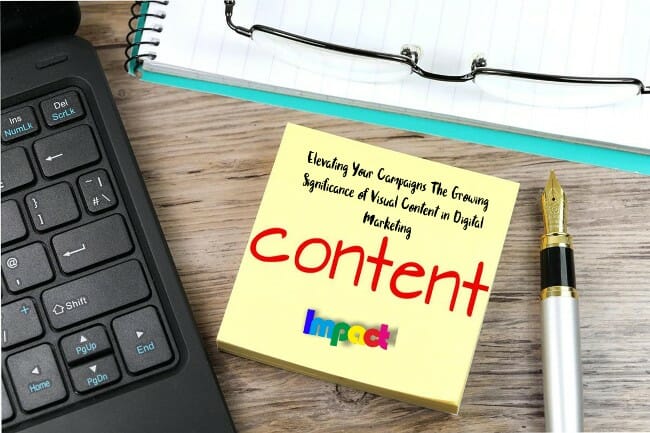In today’s fast-paced digital world, visual content is playing an increasingly significant role in the world of marketing. With more and more consumers spending time online and on social media, marketers are turning to visual content to connect with their target audience and stand out in an overcrowded online space.
From eye-catching graphics to video content and everything in between, visual content is the key to capturing the attention of potential customers and elevating your campaigns to the next level. In this article, we’ll explore the growing significance of visual content in digital marketing and how you can use it to achieve your marketing goals.
Why Visual Content Matters in Digital Marketing
The human brain processes images much faster than it does text, making visual content a powerful tool for marketers looking to reach and engage their target audience. In fact, studies have shown that content with relevant images gets 94% more views than content without images. This is because images not only help to break up large blocks of text, but they also help to create an emotional connection with your target audience.
Visual content is also more shareable than text-based content. People are more likely to share content that appeals to their emotions and is visually appealing. This means that if your visual content is well-received, it has the potential to go viral and reach a much larger audience than traditional text-based content.
Read also: Get Paid for Your Passion: 6 Practical Strategies for Monetizing Your Content Creation
Another benefit of visual content is that it helps to tell your brand’s story in a way that text simply cannot. From product demos to behind-the-scenes glimpses of your business, visual content provides a powerful and memorable way to connect with your target audience.
Types of Visual Content for Digital Marketing
There are many different types of visual content that you can use in your digital marketing campaigns, including:
- Images: From product photos to infographics, images are a powerful way to engage your target audience and convey important information about your brand.
- Videos: From product demos to company culture videos, video content is a versatile and engaging form of visual content that can be used to reach your target audience on multiple platforms.
- GIFs: Animated GIFs are a fun and attention-grabbing form of visual content that can be used to promote your brand in a lighthearted way.
- Interactive Content: From quizzes to interactive infographics, interactive content provides a fun and engaging way to educate your target audience about your brand and products.
- Social Media Posts: From Instagram stories to Facebook posts, social media provides a powerful platform for sharing visual content and connecting with your target audience.
Best Practices for Using Visual Content in Digital Marketing
Now that we’ve covered why visual content matters in digital marketing, let’s take a look at some best practices for using it effectively.
- Make it Relevant: When creating visual content, make sure it is relevant to your target audience and supports your overall marketing goals. This will help to ensure that your visual content resonates with your target audience and is well-received.
- Use High-Quality Images: Poor quality images can detract from the overall impact of your visual content, so make sure to use high-quality images that are well-lit and in focus.
- Keep it Simple: While visually appealing content is important, it’s also important to keep it simple and easy to understand. Avoid using too many images or videos in a single piece of content, as this can be overwhelming for your target audience.
- Make it Shareable: If you want your visual content to reach a wider audience, make sure it is shareable. Include social sharing buttons on your website or blog and encourage your followers to share your visual content on their own social media accounts. This can help to increase your reach and drive more traffic to your website.
- Optimize for Mobile: With more and more people accessing the internet on their mobile devices, it’s important to optimize your visual content for mobile. This includes using high-resolution images that are easy to view on small screens and designing videos that can be played on a variety of devices.
- Measure Your Results: Finally, it’s important to measure the results of your visual content marketing efforts. This includes tracking the engagement and reach of your content, as well as any conversions or sales that result from your visual content campaigns.
In conclusion, visual content is a crucial component of a successful digital marketing strategy. From capturing the attention of potential customers to creating a powerful emotional connection, visual content has the power to elevate your campaigns and help you achieve your marketing goals. Whether you’re just starting out with visual content or looking to improve your existing campaigns, following the best practices outlined in this article will help you get the most out of your visual content marketing efforts.
